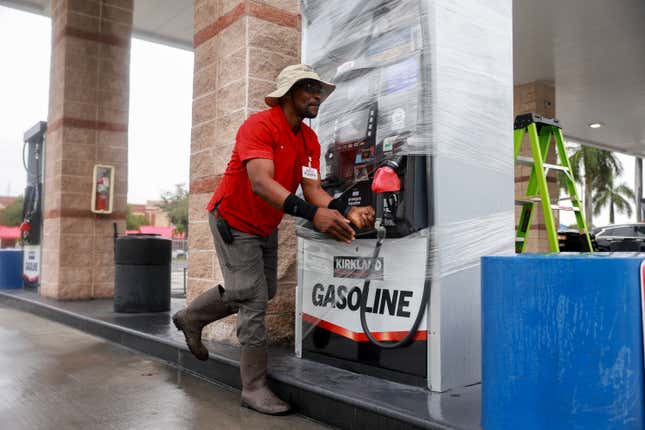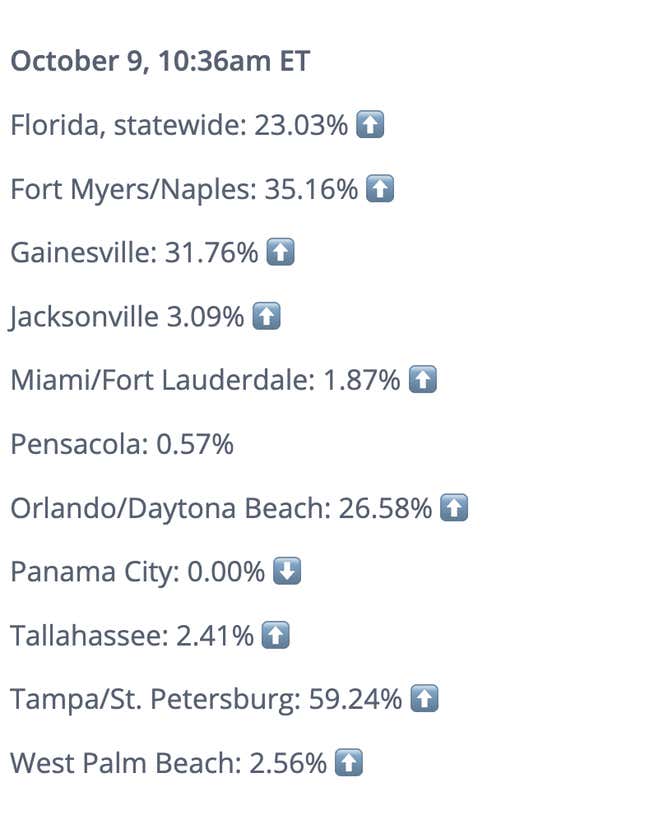
Hurricane Milton is bearing down on the west coast of Florida Wednesday evening as a Category 4 storm, but the effects of this massive storm are already being felt by the residents of the Sunshine State. Nearly a quarter of Florida gas stations are reporting that they are completely out of fuel, while Tampa-area gas stations are even worse off.
This info comes to us from GasBuddy, which is providing updates on the status of gas stations every few hours as the storm approaches. Thankfully many people are evacuating the areas that will be most impacted by the storm, but that means a huge strain on the local infrastructure. The most recent update at 9:30 Wednesday morning (the time reads 10:36 for some reason) shows just how dire things are:

Florida Governor Ron DeSantis came out Monday to assure Floridians that the state was doing all it can to keep gas flowing, but with so many people evacuating so quickly, it seems there was no way to keep every station topped off. Gas hoarding plus huge traffic delays slurped up fuel faster than the state could replenish stations.
Depending on how big of a mess the storm creates, getting these stations back up and running might prove a huge challenge. The state gets its fuel from tanker delivery from gulf states to its ports—ports that are likely to be badly damaged by the worst of the hurricane force winds. Tom Kloza, global head of energy analysis for OPIS, which tracks gasoline prices for AAA told CNN:
“The Port of Tampa is critical to supply for much of the state. It is one of most crucial pieces of fuel infrastructure in the country. I’d be hard pressed to find a market more dependent on waterborne supply and more susceptible to hurricane and storm surge.”
Tankers won’t be able to return to Tampa until the Coast Guard clears the area of debris and replaces navigational buoys. The outer wall of the storm is already affecting the weather in western Florida, with conditions to deteriorate throughout the day, CNN reports. In Tampa, wind gusts should peak at 12 a.m. Thursday at 115 miles per hour, with a storm surge expected to hit 8 to 12 feet. At those levels, cars will float away and the first floors of buildings will be completely filled. Things are even worse in Sarasota, where wind speeds could hit an astonishing 140 mph Wednesday night.
Just a reminder: You don’t have to completely flee the state to stay safe from the storm surge. Just a few feet above the expected surge areas will keep you alive, if not totally dry and out of the wind. Tools such as WhatsMyElevation.com and flood maps from the National Oceanic And Atmospheric Administration can help determine if you’re safe or need to head for higher ground. When it comes to gas, take only what you need and leave enough for the rest of the folks making their way out of the storm’s path.


